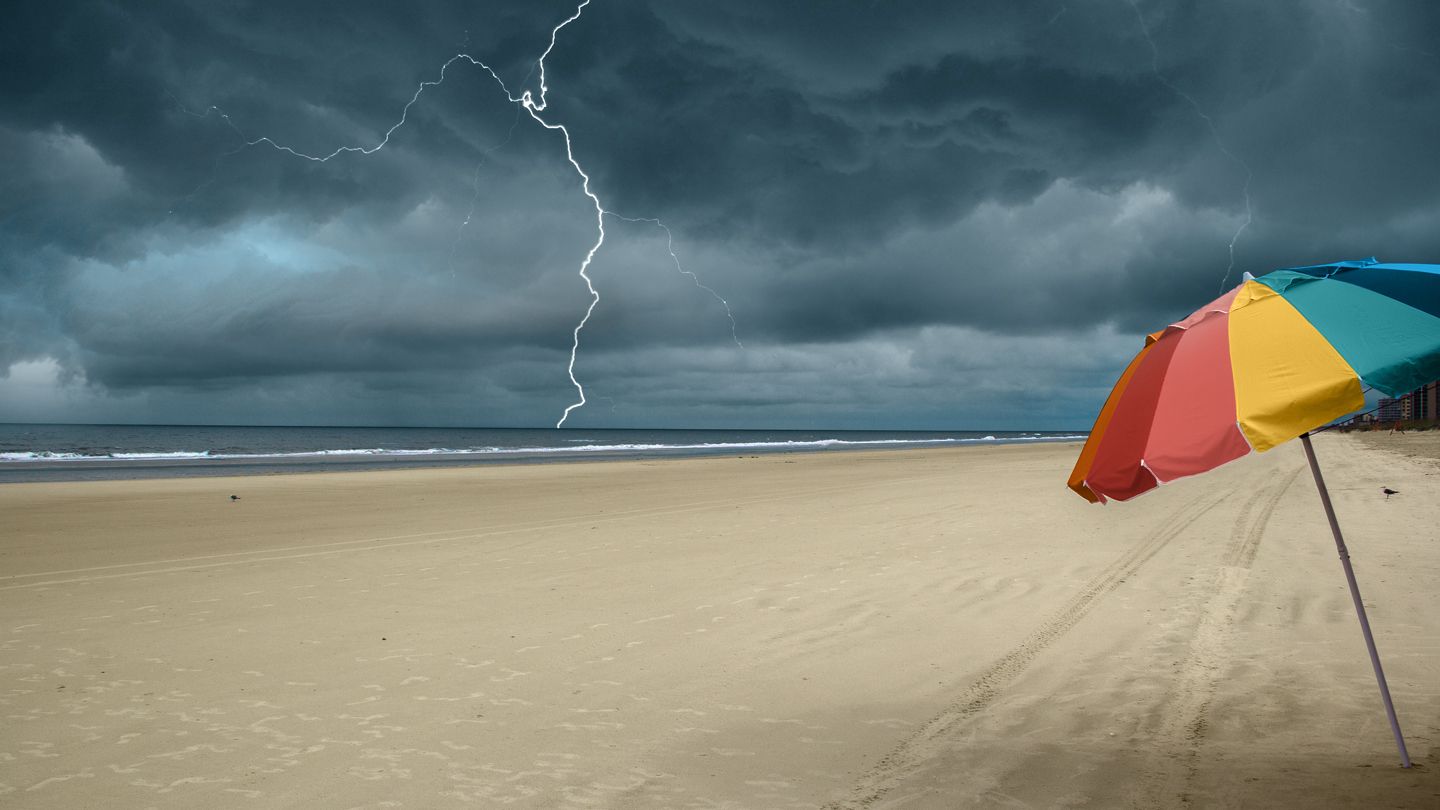Recent headlines have made it seem like the number of people getting struck by lightning is higher than normal this summer, adding to the list of seasonal health hazards.
In June, a man on his honeymoon was killed by lightning on a Florida beach. This month, lightning killed two people in New Jersey, one on a golf course and the other at an archery range.
All it takes to spark a storm is moisture, an unstable atmosphere, and a trigger like sunlight or a weather front. That makes summer the prime season for thunderstorms: Warm air holds more moisture, and when that moist air rises into cooler air as the day progresses, it can create conditions that fuel these weather events.
Lightning deaths most often happen on weekend afternoons — 2 out of 3 occur between noon and 6 p.m.
What Are the Chances of Being Struck by Lightning?
In the last decade, an average of 21 people have been killed by lightning each year in the United States. That’s less than half as many as in 2000, which experts attribute to greater public awareness of thunderstorm risks and what to do when a storm is approaching.
So far this year, lightning has killed 12 people in the United States.
The odds of being struck by lightning in a given year are less than 1 in a million, and the odds of being struck in your lifetime are about 1 in 15,000.
Where you live plays a role in the risk — Texas, Florida, Oklahoma, and Kansas hold the top spots for lightning strikes per square mile.
How Lightning Injures the Body
Lightning can harm people in many ways, including:
- Blunt trauma from the force of the strike or from being thrown
- Temporary paralysis
- Brain bleeds
- Nerve injuries
- Electrical burns, which can cause issues ranging from mild skin damage to deeper tissue injuries caused by heated objects
- Damage to the eyes and ears, leading to cataracts, hearing loss, or balance problems
A direct lightning strike can stop the heart and lungs instantly, and even if the heart restarts, a person may not be able to resume breathing without quick medical help.
Seek Shelter Immediately if You Hear Thunder
If you are outside when you hear a thunderclap, go indoors right away. No place outside is safe when thunderstorms are in the area, says Stephanie Fox, a spokesperson for the National Red Cross. If you hear thunder, that means lightning is close enough to strike you.
Even if it’s not raining or there aren’t clouds overhead, approaching thunder signifies a risky situation. Lightning often strikes several miles from the center of a thunderstorm — as far as 25 miles away.
“Seek shelter as quickly as possible inside a sturdy building — in an interior room and on the lowest floor,” says Fox. If shelter is walking distance away, try to get there quickly rather than staying in place, she says.
Stay away from open structures such as beach picnic shelters, porches, and baseball dugouts.
If there are no buildings around, a metal-topped vehicle with the windows up is safer than being outside. Vehicles without roofs like convertibles, motorcycles, and golf carts aren’t safe places.
What to Do if You Can’t Find Shelter in a Thunderstorm
If there is no shelter or vehicle available, experts recommend the following:
- Avoid elevation. Hilltops, ridges, and peaks are more likely to receive lightning strikes.
- Get out of the water. Immediately get away from oceans, lakes, ponds, pools, and other bodies of water.
- Avoid metal objects that conduct electricity — including umbrellas and golf clubs. Steer clear of barbed wire fences, power lines, and windmills. Avoid metal objects like bicycles and golf clubs. Put down your umbrella: Your chances of a direct hit are higher when you are carrying a conductor above shoulder level. Take off metal jewelry because it can magnify burn injuries if lightning passes through it.
- Don’t cluster with other people. Lightning can “jump” between people, so spreading out at least 50 feet may save lives.
- Don’t stand near tall structures. A safe distance from tall objects like trees, telephone poles, and flag poles is twice the height of the object.
- Don’t seek shelter under a tree. Being near or under tall trees increases your risk of being struck by lightning — it’s the second leading cause for lightning deaths. Lone trees are especially risky.
- Don’t lie on the ground. Lightning causes electric currents along the top of the ground that can be deadly more than 100 feet away.
- Get into the “lightning crouch.” The safest posture if you’re stuck outside is feet together, squatting low, with your head tucked and hands over ears, to minimize contact with the ground.
When Can You Go Back Outside After a Thunderstorm?
If you did manage to find a shelter, stay in place until 30 minutes after the last clap of thunder.
What to Do if You’re With Someone Who Is Struck by Lighting
People who have been struck by lightning can’t electrocute others; the human body doesn’t store electricity. Lightning victims need immediate medical attention. Administer first aid after calling 911 for help.
If the lightning strike causes a heart attack, administer CPR and use an automated external defibrillator (AED) if there’s one available. These machines can analyze heart rhythm and deliver an electric shock to a person in cardiac arrest.
Preparation Makes All the Difference
Being proactive can save you if you’re caught outside, says Fox.
“Outdoor activities are especially risky during a thunderstorm. Whether you’re hiking, playing sports, or working, having a lightning safety plan is essential. Always check the weather forecast before heading outside and delay activities if necessary. Have a shelter option nearby. Fully enclosed buildings are best,” she says.
Read the full article here




